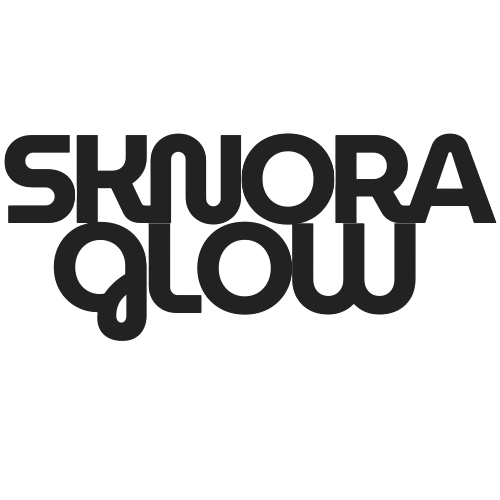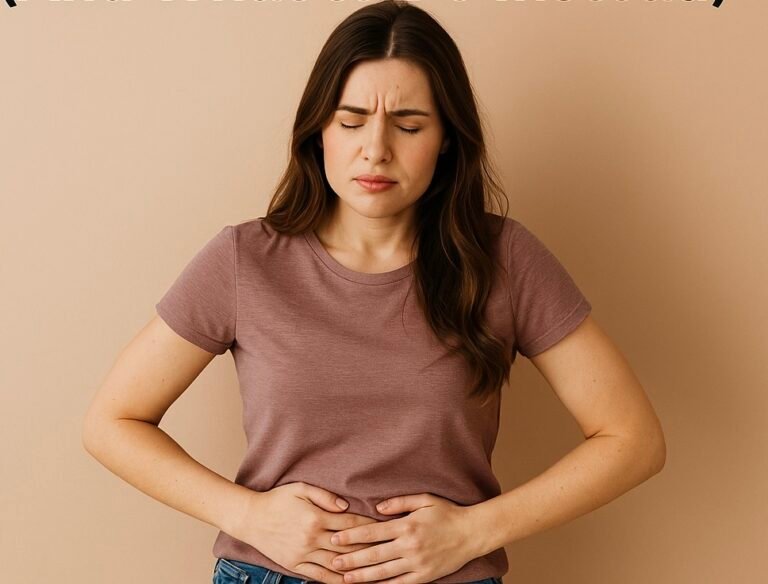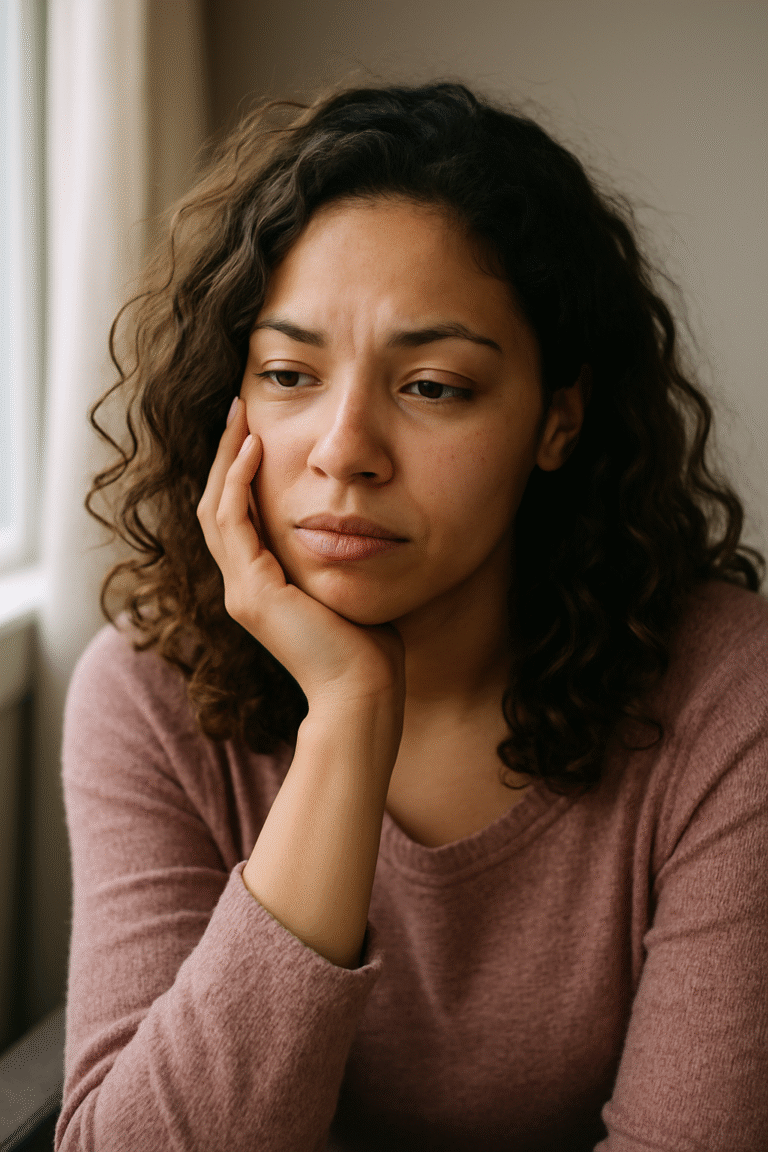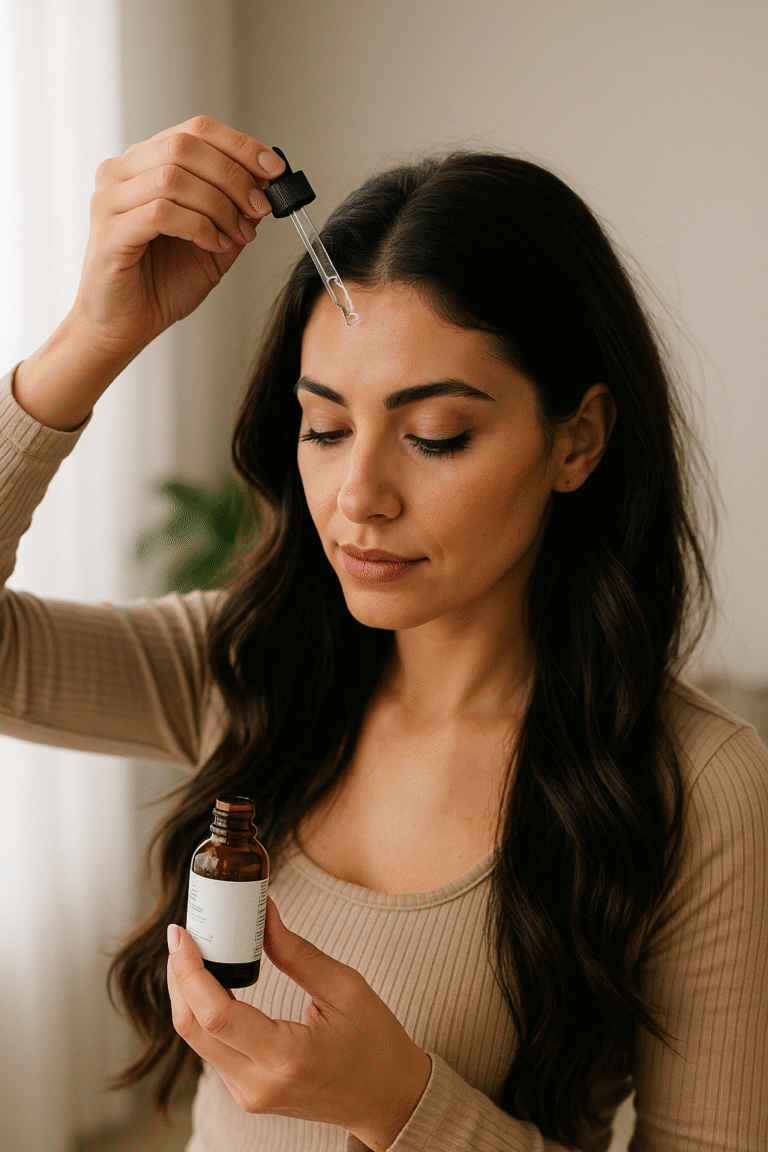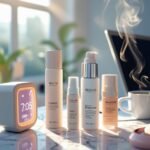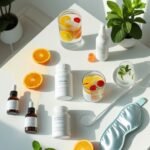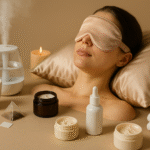Hormonal acne female concerns? Discover expert-backed causes and real solutions for adult acne in your 20s, 30s, and 40s—from skincare to internal healing.
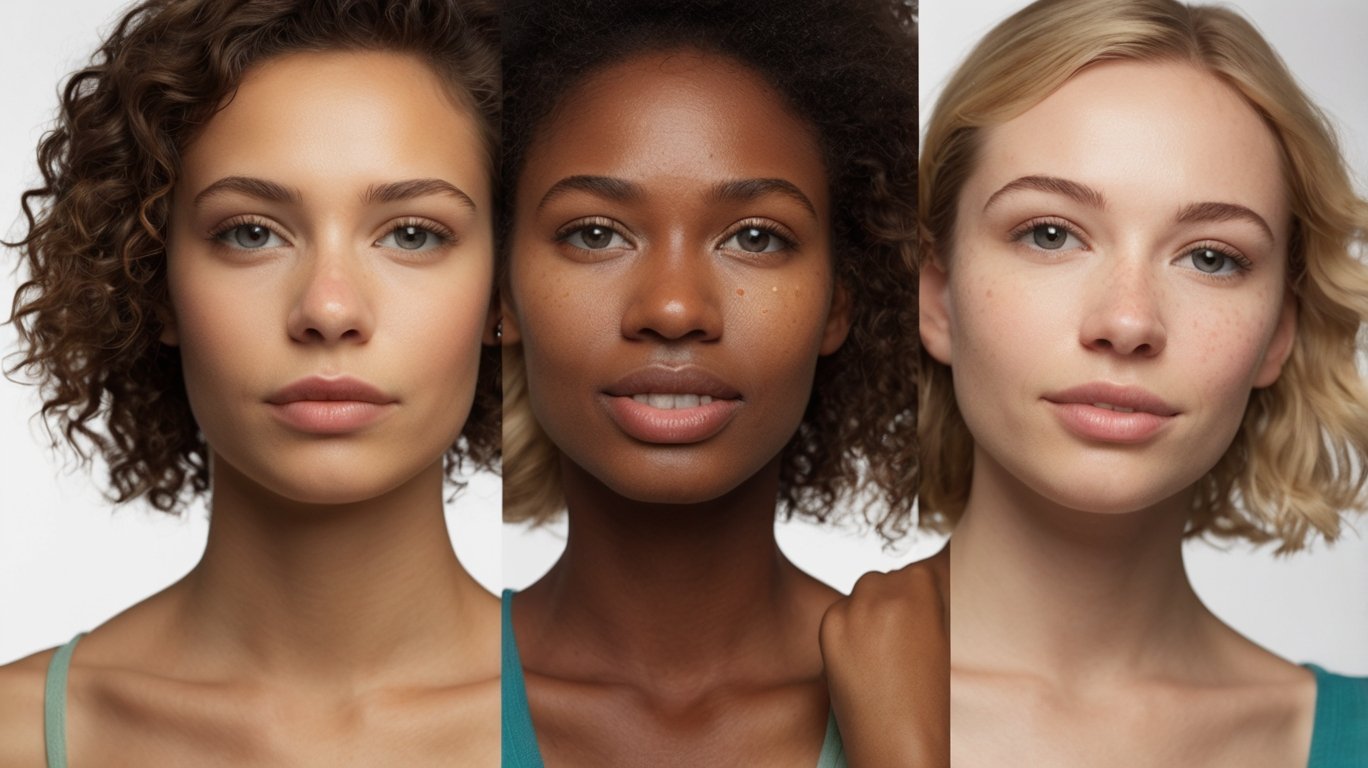
Affiliate Disclaimer: This post contains affiliate links. I may earn a small commission if you buy through them—at no extra cost to you. Thanks for supporting this blog!
Understanding Hormonal Acne in Women
What Is Hormonal Acne?
Hormonal acne refers to breakouts triggered by fluctuations in hormone levels—especially androgens like testosterone. These imbalances cause overproduction of sebum (oil), clogged pores, and inflammation, most often along the jawline, chin, and cheeks.
Unlike teenage acne, adult hormonal acne can be cystic, painful, and more stubborn. It tends to flare around your menstrual cycle or during life transitions like pregnancy, postpartum, and perimenopause.
Common Signs and Patterns
- Deep, cystic pimples on the lower face
- Monthly breakouts around the same time
- Persistent acne despite skincare efforts
- Fluctuations related to stress or birth control changes
Causes of Hormonal Acne by Age Group
Hormonal Acne in Your 20s
Your 20s are a hormonal rollercoaster—between periods, stress from college or work, and changing birth control. PCOS often appears in this decade, leading to chronic acne.
Hormonal Acne in Your 30s
As estrogen levels begin to fluctuate and fertility concerns arise, many women experience worsened acne. Sleep deprivation, early signs of aging, and lifestyle stress play a role too.
Hormonal Acne in Your 40s
Welcome to perimenopause—when estrogen drops and androgens can dominate. Even women who never had acne before may see new flare-ups. Skincare routines also need a shift due to aging skin.
Root Causes Behind Hormonal Acne
Hormonal Imbalances
Androgens (like testosterone and DHEA) trigger oil glands. A rise in these hormones—common in PCOS or perimenopause—leads to breakouts.
Gut Health and Acne Connection
An imbalanced gut microbiome can cause inflammation and poor detoxification. This affects estrogen metabolism and triggers acne. Think bloating, food sensitivities, and irregular digestion.
Stress and Cortisol Levels
High cortisol from chronic stress increases inflammation and worsens hormonal imbalances. It also messes with your blood sugar—fueling more breakouts.
Skincare Mistakes That Worsen Hormonal Acne
Over-cleansing and Harsh Products
Too much cleansing strips natural oils, causing rebound oil production. Avoid sulfates and alcohol-heavy products.
Ignoring Ingredient Labels
Pore-clogging ingredients (like coconut oil, lanolin, or silicone) may be hiding in your skincare. Use non-comedogenic products.
Not Cleaning Makeup Brushes
Bacteria build-up on unwashed brushes can sabotage even the best skincare routine. Wash them weekly!
Best Dermatologist-Approved Treatments
Topical Retinoids and Benzoyl Peroxide
Retinoids unclog pores and reduce inflammation. Benzoyl peroxide kills acne-causing bacteria. These are first-line treatments recommended by dermatologists.
Oral Contraceptives and Spironolactone
Birth control pills can regulate hormones. Spironolactone is a prescription that blocks androgen receptors—very effective for women with hormonal acne.
Prescription vs. Over-the-Counter Options
OTC products work for mild cases. For persistent or cystic acne, consult a dermatologist for tailored prescription therapies.
Natural and Holistic Remedies That Work
Anti-inflammatory Diet Tips
What you eat affects your skin more than you think. Diets high in refined sugars, dairy, and processed foods can spike insulin and androgen levels. Try incorporating:
- Leafy greens (kale, spinach)
- Omega-3-rich foods (salmon, flaxseeds)
- Antioxidant powerhouses (berries, turmeric, green tea)
Avoid sugar, white bread, dairy (if sensitive), and hydrogenated oils. Opt for whole, nutrient-dense meals to support hormonal balance and reduce inflammation.
Herbal Supplements and Adaptogens
Herbs like Vitex (chaste tree berry) help regulate menstrual cycles and reduce hormonal breakouts. Spearmint tea has mild anti-androgenic effects. Ashwagandha and rhodiola help your body manage stress, lowering cortisol levels.
⚠️ Always check with a healthcare provider before starting herbal remedies.
Essential Oils and DIY Spot Treatments
Tea tree oil is a powerful antibacterial agent for spot treatments. Mix 1-2 drops with a carrier oil (like jojoba) and apply to blemishes. Avoid overuse—essential oils can irritate skin when undiluted.
Beauty Influencer-Approved Skincare Secrets
Best Daily Routines for Acne-Prone Skin
Influencers who battle hormonal acne often swear by consistency. A minimalist but effective routine might look like:
- AM: Gentle cleanser → Niacinamide serum → Lightweight moisturizer → Mineral sunscreen
- PM: Oil cleanser → BHA/AHA exfoliant (2–3x/week) → Retinoid → Non-comedogenic moisturizer
Product Layering Tips That Make a Difference
Layer products from thinnest to thickest. Always allow treatments to absorb before layering moisturizer or sunscreen. Never mix benzoyl peroxide and retinol together—they cancel each other out and may irritate skin.
Wellness Blogger’s Guide to Internal Healing
Gut Healing Protocols
- Take a quality probiotic
- Add prebiotic fiber (onions, garlic, oats)
- Reduce inflammatory foods (gluten, dairy)
- Drink bone broth for gut lining repair
This supports the skin-gut-hormone axis that often gets overlooked in traditional acne treatment.
Hormone Balancing Supplements
- Zinc (helps control oil and heal skin)
- DIM (Diindolylmethane): supports estrogen detox
- Magnesium: calms the nervous system and helps with PMS symptoms
Start slow with one at a time and monitor how your body responds.
Sleep, Hydration, and Detox Habits
- Aim for 7–9 hours of sleep nightly
- Drink half your body weight in ounces of water daily
- Support liver detox with milk thistle or dandelion root tea
These foundational habits ensure your body can flush toxins and maintain healthy hormone levels.
Best Products for Hormonal Acne (Reviewed)
Best Cleansers
| Product | Features |
|---|---|
| CeraVe Foaming Facial Cleanser | Gentle, non-stripping, perfect for oily skin |
| La Roche-Posay Effaclar Gel | Targets acne without overdrying |
Best Serums and Treatments
| Product | Key Ingredient |
|---|---|
| The Ordinary Niacinamide 10% + Zinc | Regulates oil, fades dark spots |
| Paula’s Choice 2% BHA Liquid | Unclogs pores, smooths skin texture |
| Differin Gel (Adapalene 0.1%) | OTC retinoid that treats and prevents breakouts |
Best Moisturizers and Sunscreens
| Product | Skin Type |
|---|---|
| Neutrogena Hydro Boost Gel Cream | Lightweight hydration for oily skin |
| EltaMD UV Clear SPF 46 | Broad-spectrum SPF + niacinamide |
Creating a Personalized Acne-Fighting Routine
Morning vs. Night Routine Essentials
- Morning: Hydration + antioxidant serum + SPF
- Night: Double cleanse → treatment → moisturizer
Rotate active ingredients carefully and don’t overload your skin all at once.
Weekly Detox Strategies
- Clay masks (like bentonite or kaolin)
- Facial steaming with chamomile
- Scalp detox to prevent hairline acne
When to See a Dermatologist or Endocrinologist
Signs It’s Time for Professional Help
- Acne worsens despite a clean lifestyle
- Deep, cystic breakouts that leave scars
- Missed periods or other signs of PCOS
A derm can prescribe medications, while an endocrinologist can run hormone panels and address root causes.
What Tests Can Reveal About Your Hormones
- Testosterone (total and free)
- DHEA-S
- Estrogen and Progesterone
- FSH/LH (ovarian health)
- Thyroid panel (TSH, T3, T4)
Myths About Hormonal Acne Busted
“Only Teenagers Get Acne”
False. Adult acne is extremely common—especially for women in their 20s to 40s.
“Greasy Food Causes Breakouts”
Not directly. While fried food isn’t great for your skin, breakouts are more tied to blood sugar spikes and hormones, not oil itself.
Q1: Can hormonal acne be cured permanently?
A1: It can be controlled long-term through a mix of internal and topical approaches, but it may flare up again with life changes.
Q2: What’s the best natural remedy for hormonal acne?
A2: Diet changes, spearmint tea, and balancing supplements like DIM are highly recommended.
Q3: Is it better to use natural products or prescription treatments?
A3: A combination often works best—natural methods support your body, while prescriptions can target severe symptoms fast.
Q4: Does PCOS always cause acne?
A4: Not always, but it’s a leading cause due to excess androgens. Acne with irregular cycles is a red flag.
Q5: Can I treat hormonal acne without birth control?
A5: Yes. Spironolactone, diet, herbs, and skincare all offer non-hormonal paths.
Q6: How long does it take to see improvement?
A6: 6–12 weeks with consistent skincare and internal support. Patience is key.
Conclusion: Real Solutions for Long-Term Clear Skin
Hormonal acne is more than skin deep—it reflects your inner balance. Whether you’re navigating your 20s, managing motherhood in your 30s, or facing perimenopause in your 40s, the right approach makes all the difference.
From dermatologist tools to gut-focused wellness, from clean products to lifestyle upgrades—you have options. Clear skin isn’t a myth. It’s a journey. And now, you have the roadmap.
Learn more about how your hormones impact your skin at this in-depth guide.
